Human Perception and the Color of Gemstones
Do you remember a few years back? There was a viral post going around the internet that involved a dress with a color that no one could agree upon.
Some people said the dress was blue and black, and some said it was white and gold. Over a million tweets were made about this photo, and it even made its way to the evening TV news. The photo eventually sparked a peer-reviewed scientific study about the science of human perception.
The dress manufacturer eventually confirmed that the dress is black and blue. Still, it’s just one small example that shows how complicated color can be.

The Premise: If you work in the gem trade or if you buy gemstones, there is a chance that this situation has happened to you: There is a gemstone for sale in Hong Kong, for example. There is a potential customer in the West. For the sake of this example, let’s say they’re in Paris, though it could easily be Geneva, London, New York, or Los Angeles. The seller takes a snapshot of the gemstone with their phone camera, and the customer likes it. Money is being exchanged, and the seller ships the gemstone from Hong Kong to Paris. Upon arrival, the customer is surprised to see that the gemstone is quite different from what they had expected. They contact the seller and yell and shout and call them a tricky crook. The seller is shocked because they have done nothing wrong, but the customer feels somehow deceived.
The Breakdown: Let’s take a closer look at this chain of events. Color is not a fixed phenomenon. There are numerous factors that can influence our perception, and we will break them down to make it more understandable.
Sunlight: First of all, there is sunlight. The simplest situation that could happen is if the seller took the photo outside and the buyer looks at the gemstone outside. Hong Kong is in a tropical environment and is close to the equator. The sunlight in Hong Kong is very strong and very yellow. Paris, on the other hand, is known as a grey city where it rains a lot. In our experience as a gem dealer, the light in Paris is very blue and green. Without any other factors involved, the same gemstone looked at by the same person at noon would look quite different in those two different cities.

Time of Day: Let’s consider the time of day now. If the seller took the photo outside at 9 a.m., and the buyer looked at the gemstone outside at 1 p.m., even in the same city, let alone on different sides of the Earth, the gemstone would look dramatically different. The color of sunlight changes throughout the day. It’s warmer in the morning and evening because the Earth’s atmosphere scatters the shorter light rays (blue, green, purple) and leads us to notice the remaining colors, which are warm-colored.
Electric Light: The example has been simple so far. The color of the sun is somewhat constant. We know that the sunlight in Hong Kong will be around the same color at noon on most days, and we know that the sunlight in Paris will be a different color. But what if the seller took the picture indoors because it was raining outside in Hong Kong. Suddenly the whole situation gets a lot more complicated because electric light has many different colors. The kind of lights you usually see on a gem dealer’s desk are fluorescent.
The standard fluorescent light color is 6000K, also known as “cool white.” This is the same type of light that we see in offices and hospitals. It’s a stimulating color that makes the mind more alert. It also makes the color of blue sapphire a little richer and makes the color of ruby look dull. Maybe our buyer received the gemstone at home and looked at it at night in the living room.
The color of lightbulbs used at home are usually around 3500K and are called “warm white.” Warm white looks softer, warmer, and even more comfortable to our eyes and has the effect of enhancing the red color in ruby and making blue sapphire look darker, possibly even black.
As we can see, when electric lighting is involved, the situation becomes very complicated. Not only must we consider the fact that sunlight is a different color between Paris and Hong Kong, but now what if the seller took the picture with a cool white bulb and the buyer looks at it with a warm white bulb? The gemstone will appear to be a different color. Suppose the seller took the picture in the warm Hong Kong sun, and the buyer looks at the gemstone at work with a cool white light overhead. In that case, the gemstone will also appear to be a different shade of color.
Cameras and Screens: This is where the situation becomes even more complex. The seller took the photo with a Samsung phone, but the buyer looks at it on an iPhone and later on an older MacBook Pro. Each phone has a certain color profile that it uses. Some photos look better taken with an iPhone; some look better on a Samsung, depending on brightness and shade of color. In our experience, We have found that Samsung does a particularly bad job photographing reds and greens accurately. They both tend to look blown out and dramatically misrepresented, make the photo look inaccurate.
So, we know that the choice of the phone that the seller has used to take the photo with will make the gemstone look different, and if the gemstone is red, which it is, the phone is going to have a particularly hard time representing that color accurately. Now the customer looks at the gemstone photo on a different brand of the phone which has a different color profile. It shows colors differently.
So, even if the seller took an incredibly accurate photo (which is not possible due to all the variables we have already described), the color would look different because the buyer is looking at the photo on a device that makes the color look different. If the buyer compared the photo on their iPhone XS, which has a Retina Display, to the photo on their older MacBook, which does not have a Retina Display, they would notice that the color is not the same because the Retina Display has a slightly different color profile than older MacBooks with non-Retina screens.

Color Gamut: Aside from color profiles and the various ways in which different devices display color, there is also something called color gamut to consider. The human eye can distinguish between 7 million different colors. When you take a photo with your iPhone, you are converting all of the color variations that your eyes can see into an 8-bit JPEG that uses the sRGB profile. The color range or gamut of each device is slightly different. When you go from the camera’s color gamut to a computer monitor or a phone screen, the software must convert the colors, which can cause subtle color shifts.

Backlighting: Now we know that there is no way that the buyer and seller could see the same exact color in a red gemstone. The color of the sun, the color of the electric light, the color profile of the camera, and the color profile of the viewing screen will all affect the shade of the color of the gemstone. But there are still more ways in which the gemstone’s color can change, and some of these are dramatic. If you put an electric light in front of a gemstone, it will look one color. Suppose you put an electric light behind the gemstone (for example, to see the internal inclusions better). In that case, the gemstone can appear to be every different color. If the gemstone is taken against a white background, it can look different than if it was taken against a dark background.

A photo is seen in varying color calibrations on different devices
This has to do with how light and dark surfaces absorb and reflect the color from a light source, as well as how our eyes perceive color against dark and light backgrounds. In the end, it’s not possible to avoid such a problem. The best thing to do is be as aware as possible about how color works, whether you’re the buyer or the seller, and then have a degree of flexibility and open-mindedness when receiving the gemstone. If that’s not exactly how you expected it to look, it’s ok to discuss this with the seller, and if the gemstone is not suitable due to differences in color perception, then it should be acceptable to return the gemstone to the seller for a refund. The absolute best thing to do is see the gemstone in person in the city you live in.
Unfortunately, this isn’t always a realistic option, so the best we can do is try our best to accurately represent colors and cross our fingers. Once we own a gemstone, whether in jewelry or in faceted form, we can watch it all day and night and appreciate all the color shades that it displays as the color of the sun changes and as we take it from blue light into red light.
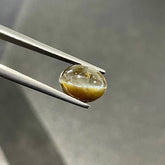
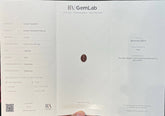
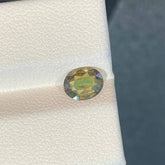
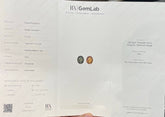

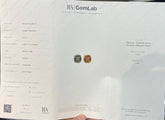
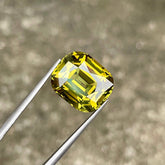
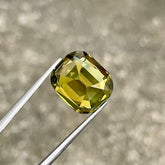

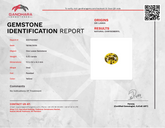
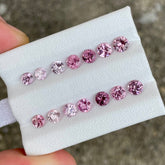

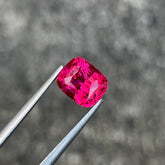



Leave a comment
Please note, comments need to be approved before they are published.